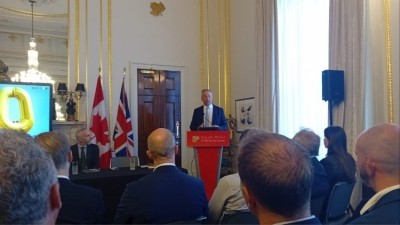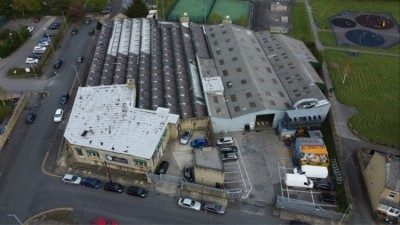Long read
Building a sustainable and adaptable supply chain

Food supply chains need to be intricately planned, especially when it comes to fresh food, to maintain our just in time system and a level of continuity that protects the UK’s food security.
But no matter how much planning you do, there are still parts of the supply chain that you just cannot control. Freak weather events can bring the entire country to a standstill and upsets in the geopolitical landscape can leave food rotting on the docks if alternative transports can’t be arranged.
“Food manufacturers are more susceptible than most to supply chain problems due to a number of factors such as perishability of goods and the knock-on effects of climate change, which is driving an increase in environmental disasters that range from flash flooding to crop damage,” explained Simon Thompson, vice president of sales UK and Nordics at Jaggaer.
He urged manufacturers to keep a keen eye on numerous trends, as the impact of seemingly unconnected events could drive delays and stalls in supply.
“For example, recently the Institute of Export & International Trade highlights that there are potential shortages concerning rice coming from India,” he continued. “The country is the world’s largest rice exporter, shipping more than 4.5 million tonnes annually, 35% of which passes through the Red Sea, now a dangerous route for cargo ships. Estimates suggest that some $30bn in rice exports could be lost if the crisis continues.”
In the face of such uncertainty in the supply chain, identifying low-cost and efficient alternative transport options are a key element in any food and drink manufacturer’s resilience strategy.
“Supply chain managers that can identify and quickly secure alternative sources and routes in case of an adverse event, are better positioned to address any future disruptions,” Thompson added. “This in turn relies on having an alternative plan on how to conduct trade to drive resilience, mitigate risks, [and] optimise costs and efficiencies to react flexibly to unexpected changes in their business environment.
Technology and risk management
Thompson pointed toward greater use of technology and automation to help make dynamic and flexible plans that effectively manage and minimise the impact of unexpected events. Automated systems can process huge volumes of data from supplier sources, analyse changes in performance over time and help prevent potential bottlenecks from occurring.
“So far, use of AI [artificial intelligence] has mainly been limited to specific tasks based on predefined algorithms. When applied to supply chain management, AI could help make informed and timely buying decisions based on pricing, market trends, the risk of disruptions to supply chains and other factors,” Thompson suggested.
“Now, generative artificial intelligence – such as the popular ChatGPT – has expanded the potential for AI to also create new content and intelligent analysis. Digital tools can also foster closer, real-time collaboration with suppliers, which in turn enhance transparency and intelligence sharing.”
By all accounts, agility is the name of the game if food and drink businesses want to level up their supply chains. The unpredictable nature of the world is only going to get worse as time goes on, so being flexible and able to adapt is going to be key as we navigate future difficulties.
“Traditional supply chain models are often too rigid to handle the unpredictability of the contemporary consumer product industry, therefore a consumer product supply chain that is adaptive to market forces can be a critical asset,” said Katy Gallagher, 4C Associates director and head of consumer products.
“When adopting agile supply chain practices, consumer needs become a greater priority, though a key enabler of agility is implementing advanced data analytics for real-time decision making that incorporates data for consumer habits, as well as data inputs from the entire ecosystem.”
While the implementation of an agile supply chain can hold promise for enhancing responsiveness and competitiveness in food and drink businesses, it's essential to recognise that it may not be the ideal solution for every organisation and is certainly not a one-size-fits-all in terms of implementation.
“The challenges involved, including cultural shifts to embrace flexibility and collaboration as well as technological investments required and supply risk management demand careful consideration,” Gallagher warned. “Therefore, businesses must assess their unique circumstances, capabilities and readiness before embarking on the journey towards agility in their supply chains.
“In summary, consumer products businesses should prioritise enhancing their supply chain operations to improve responsiveness to unpredictable consumer trends, strengthen resilience against shocks and optimise each stage of their operation to drive down costs and stay ahead of the competition.”
Challenges in the cold chain
Extreme weather may be unpredictable, but one constant is the presence of longer, hotter summers. It’s during these months that the cold chain needs to work even harder to prevent food from spoiling on the road. With this in mind, cold chain operators have ample opportunities to save their companies money.
As Lineage regional vice president Claire Walters points out, temperature-controlled storage is an energy intensive industry. With the world getting hotter – global warming exceeded 1.5°C across an entire year in 2023 for the first time, according to the EU’s Copernicus Climate Change Service – the industry can’t afford to sit idle.
“Firstly, by using real-time intelligence platforms and autonomous data-driven solutions, companies can access, trace and process millions of data points,” Walters explained, “such as inventory demands, storage and warehouse temperatures, and delivery statuses, allowing teams to analyse where excess energy is being used and optimise energy consumption levels.
“For instance, with transportation, this means more efficient routes and loads can be configured, reducing fuel consumption and improving product quality. Moreover, by leveraging advanced technologies, companies can transform traditional processes to make them more efficient.”
Investing in solar energy technology is a no brainer for businesses looking to manage their energy consumption, which can be further complimented by switching to LED lighting and variable frequency drives in refrigeration systems – with the added bonus of limiting their environmental impact.
“We have also invested in fully automated warehouses, which offer additional opportunities for energy savings and efficiencies,” Walters added. “In traditional warehouses, forklifts are typically used to transport goods on pallets in and out of the cold store.
“However, in an automated warehouse using a conveyor system, we can reduce the size of the doors as only a pallet needs to pass through from the warehouse to the loading docks. This smaller opening helps minimise heat entry via doors, thereby improving energy efficiency.
“Additionally, automated warehouses using cranes can be built taller than traditional warehouses, increasing their density relative to their footprint. This design reduces heat entry via the roof relative to the stored products, potentially decreasing demand on the refrigeration system.”
For Walters, the future of the cold chain lies in aligning digitisation and sustainability. By embracing innovation and environmental stewardship, it is possible to maintain the highest standards of food safety and quality while significantly reducing emissions.
The carbon conundrum
Emissions remain one of the most important considerations to any business. As previously stated, the world is getting hotter and targets to limit global warming seem to be even further out of reach than ever before.
To be truly environmentally conscious, sometimes a supply chain operator needs to look outside the box on ways to cut carbon emissions. Simple changes further down the supply chain could make a big difference.
You can cut down the amount of miles your vehicles have to travel to reach customers or switch out all the lightbulbs in the warehouse with energy saving alternatives all you want, but have you considered the carbon cost of your storage equipment?
Plastic boxes and pallets could have travelled halfway around the world to make it to the UK, creating a substantial carbon impact that isn’t instantly visible at a casual glance of your operations.
Logistics equipment provider Palletower found that by transporting just 607 plastic boxes to the UK generates the same amount of carbon emissions as an average SME.
Matthew Palmer, managing director at Palletower, said: “By shifting the manufacturing of our plastic box pallets from overseas to the UK, we will not only gain more control over the production process, but will drastically reduce the carbon emissions we emit as a business annually.
“In an industry which is typically known as having its environmental challenges, we are keen to lead the way and spread awareness to our customers about the importance of investing in sustainable practices from the ground up, starting with the equipment they use to transport their goods. By purchasing plastic boxes from Palletower, your company will be significantly reducing its carbon footprint and helping improve the environment as whole.”



























